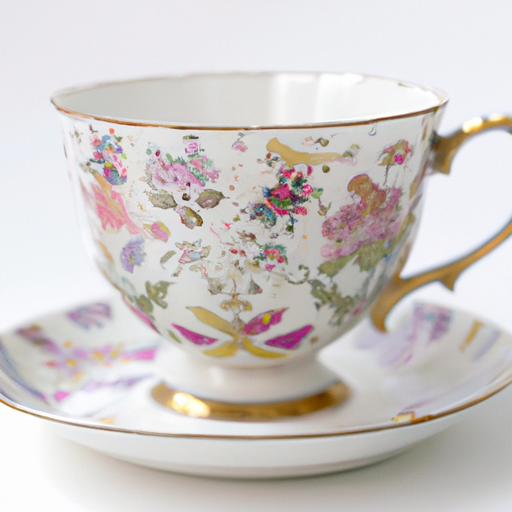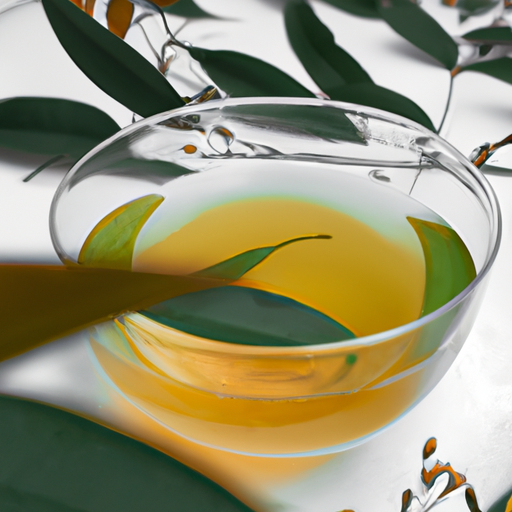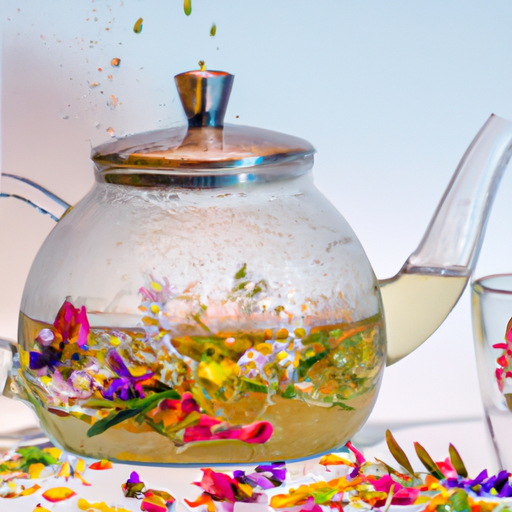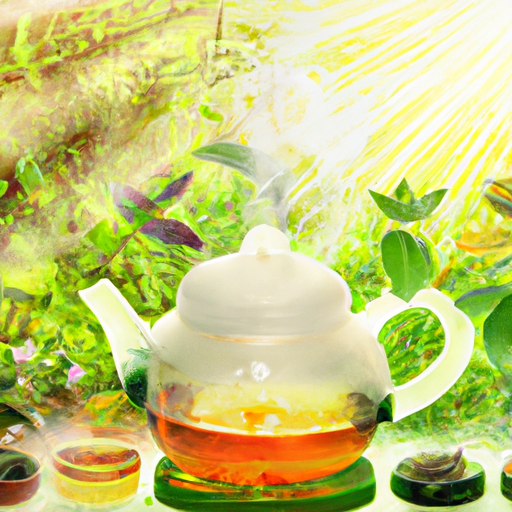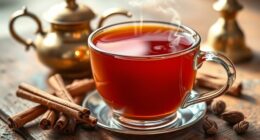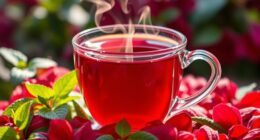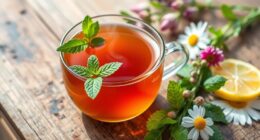Picture yourself in a bustling city, surrounded by the noise and chaos of everyday life. In the midst of this modern chaos, wouldn’t it be nice to find a moment of calm and peace? That’s where ashwagandha tea comes in.
This ancient herbal remedy, also known as Indian ginseng, has been used for centuries in Ayurvedic medicine to promote balance and improve overall well-being. But what exactly is ashwagandha tea?
It’s a powerful adaptogenic herbal tea with a bitter flavor and a horsey aroma. Adaptogens are a class of herbs that help the body adapt to stress and promote a state of balance. And ashwagandha is one of the most revered adaptogens out there.
The benefits of ashwagandha tea are truly remarkable. It can help reduce anxiety and depression, boost physical endurance, and even improve fertility. It has anti-inflammatory and antioxidant properties, protecting your immune system and fighting against oxidative stress. Plus, it promotes healthy sleep and protects the brain.
In this article, we’ll explore the power of ashwagandha tea and delve into its many benefits. But remember, it’s always important to consult a healthcare professional before using ashwagandha for medical purposes. So sit back, relax, and let’s discover the incredible benefits of ashwagandha tea together.
Key Takeaways
- Ashwagandha tea is a powerful adaptogenic herbal remedy used in Ayurvedic medicine.
- It has numerous benefits including reducing anxiety and depression, boosting physical endurance, improving fertility, and protecting the immune system.
- Precautions should be taken when using ashwagandha tea, such as consulting a healthcare professional, starting with a lower dose, and considering individual health conditions and medications.
- Ashwagandha tea can be safely incorporated into a routine with proper precautions and has the potential to provide various health benefits.
What is it?
I’ve heard that ashwagandha tea is a type of adaptogenic herbal tea that’s been used in Ayurvedic medicine for thousands of years. It’s believed to have numerous health benefits and is often called Indian ginseng. Ashwagandha tea is made from the root of the ashwagandha plant and is available as a supplement, powdered form, or dry root.
This tea has a bitter flavor and a distinct horsey aroma, but it can be blended with other herbs to reduce bitterness and enhance flavor. People use ashwagandha tea for various purposes, including reducing stress, anxiety, and depression. It’s also believed to improve fertility, protect against oxidative stress, and promote healthy sleep.
There are many ashwagandha tea recipes available, and it’s important to consult a healthcare professional before using it for medical purposes.
Health Benefits
One of the health benefits of ashwagandha tea is its potential to reduce stress and improve overall quality of life. Ashwagandha tea has been used in Ayurvedic medicine for centuries and is known for its adaptogenic properties. Here are four potential effects of ashwagandha tea:
-
Stress management: Ashwagandha tea may help reduce stress and anxiety by regulating cortisol levels, a hormone associated with stress response.
-
Improved fertility: Studies suggest that ashwagandha tea may improve fertility in both men and women. It may enhance sperm quality and increase testosterone levels in men, while also supporting hormonal balance in women.
-
Enhanced immune function: Ashwagandha tea has immunomodulatory properties that can boost the immune system and protect against oxidative stress.
-
Anti-aging effects: Ashwagandha tea is rich in antioxidants, which can help protect against cellular damage and promote healthy aging.
It’s important to note that while ashwagandha tea has many potential benefits, it’s always best to consult a healthcare professional before incorporating it into your routine, especially if you have any underlying medical conditions.
Precautions and Considerations
Before incorporating ashwagandha tea into my routine, it’s crucial to consult with a healthcare professional to ensure it’s safe for me, considering my individual health conditions and medications.
While ashwagandha tea offers numerous health benefits, it’s important to understand the precautions and considerations associated with its use. Long-term use of ashwagandha should be approached with caution, as there’s limited research on its safety over extended periods.
Additionally, high doses of ashwagandha may lead to side effects such as upset stomach, diarrhea, and vomiting. It’s recommended to start with a lower dose and gradually increase if needed.
Consulting with a healthcare professional can provide personalized dosage recommendations based on individual needs and health conditions. By taking these precautions, I can safely incorporate ashwagandha tea into my routine and reap its potential benefits.
Frequently Asked Questions
Can ashwagandha tea be consumed by pregnant or breastfeeding women?
During pregnancy and breastfeeding, it is important to consult a healthcare professional before consuming ashwagandha tea. Safety precautions should be taken as the effects on these stages are not well understood.
Are there any known interactions between ashwagandha tea and medications?
Potential drug interactions with ashwagandha tea should be considered. It may affect the effectiveness of certain medications. Consult a healthcare professional before combining ashwagandha tea with any prescribed or over-the-counter medications to ensure safety and effectiveness.
Can ashwagandha tea be used as a substitute for prescription medications for anxiety or depression?
Sure, ashwagandha tea is a natural remedy for anxiety and depression, but it cannot fully substitute prescription medications. While it may help manage symptoms, consult a healthcare professional for personalized advice.
Is it safe to consume ashwagandha tea daily for an extended period of time?
It is generally safe to consume ashwagandha tea daily for an extended period of time. However, it is important to consult a healthcare professional for individualized dosages and to monitor potential long-term effects.
Is there a recommended dosage for ashwagandha tea based on age or health conditions?
Personally, I suggest consulting a healthcare professional for the recommended dosage of ashwagandha tea based on age or health conditions. High doses and long-term use should be avoided to prevent potential side effects.
Conclusion
In conclusion, ashwagandha tea is a powerful herbal remedy that offers a wide range of benefits for both the mind and body. Its adaptogenic properties make it an effective tool for managing stress, anxiety, and depression, while also boosting the immune system and improving physical endurance.
Furthermore, its anti-inflammatory and antioxidant properties protect against oxidative stress and promote overall wellness. However, it’s important to exercise caution and consult a healthcare professional before using ashwagandha, as individual reactions may vary.
With its ancient roots in Ayurvedic medicine, ashwagandha tea is a holistic solution for promoting well-being and vitality. So why not give it a try and experience the remarkable power of this herbal tea for yourself?



